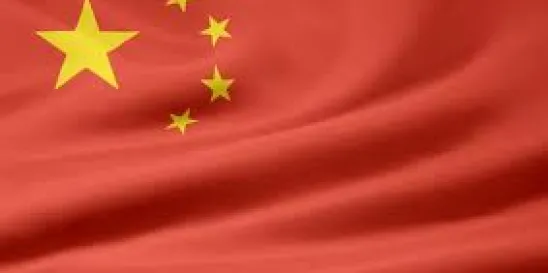In 2023, the food industry witnessed a favorable and optimistic regulatory trend in China, as the government actively signaled its commitment to fostering the growth of the food sector by further improving its regulatory framework. Noteworthy measures include revitalizing the regulatory framework for health foods, continuous greenlighting of new food ingredients, approving genetically modified (GM) food additives, issuance of clearer guidelines for food advertising, etc., contributing to a more welcoming environment for food enterprises conducting business in China.
Alongside these positive advancements, it is important to acknowledge that the food industry remains a focal point of the Chinese government’s oversight. China continues to strengthen its food safety management system, conduct regular food inspections on domestic and overseas food products, introduce food inspection/detection methods, as well as put forth recent efforts towards revising its food labeling standard. These ongoing changes demand vigilant attention from stakeholders.
This article provides an overview of the key regulatory developments in China’s food industry in 2023, offering insights into the evolving landscape that enterprises need to navigate for successful market entry, followed by an outlook of what we can expect in the coming year.
National food safety standards (GB standards) for general issues like testing methods for foods, food labeling, to more specifics for food products and food additives (including nutrient fortification substances) saw further development in 2023. Some GB standards officially came into force in 2023, such as GB 10765-2021 for infant formula and GB 2762-2022 for maximum residue limits of contaminants in foods.
Looking at the big picture on a national level, in early 2023, China continued to promote its “Healthy China 2030” blueprint by unveiling the Key Points of the Healthy China Action Plan in 2023[1], suggesting that China will accelerate the establishment and revision of national food safety standards and further promote the construction of nutrition and health standard systems.
Following this, in September 2023, the National Health Commission (NHC) published 85 national food safety standards and three amendments[2], covering Good Manufacturing Practice (GMP) requirements for dairy products and infant formula, food additives and nutrition fortification substances, and food testing methods, etc.
Notably, in July 2023, China National Center for Food Risk Assessment (CFSA) for the second time, solicited public comments on GB 14880-202x National Food Safety Standard for Use of Nutrition Fortification Substances (“GB 14880”)[3]. As a follow-up to the introduction of “mass food fortification”[4] and “voluntary food fortification”[5] in the first draft of GB 14880[6], the second draft updates the fortification requirements per these two food categories. A more detailed discussion regarding the second draft of GB 14880 can be found in Keller and Heckman’s previous CRM article - Updates on China’s Regulation of Food Ingredients and Additives.
New ingredients and food additives continue to be approved by NHC in 2023. Specifically, NHC approved a total of 12 food ingredients and 33 food additives through its 2023 Announcements No. 1[7], No. 3[8], No. 5[9], No. 8[10], and No. 10[11]. Among the approved substances, one noteworthy development is the approval of new nutrition fortification substances derived from GM microorganisms, including 2’-fucosyllactose (2’-FL) (sourced from E. coli K-12 DH1 MDO), and Lacto-N-neotetraose (LNnT) (sourced from E. coli K-12 DH1 MDO), which marks a significant shift in China’s regulation of GM additives. This signifies that, beyond enzymes[12], China officially opened the door for the approval of other types of GM additives, sending a positive signal to companies seeking clearance for their new GM additives in China. Further, CFSA is currently developing detailed guidelines for assessing new food ingredients produced through GM technology, which will clarify the specific dossier requirements. The initial draft has already undergone expert review and is expected to be released for industry comments as the next step. This release is expected to unveil more detailed insights into China’s evolving regulatory framework for GM food ingredients.
In the meantime, to help the industry better understand the status of approved food ingredients and food additives, NHC introduced a catalog of “Three New Foods,” which compiles the approvals of 98 new food ingredients and 215 new food additives that were published during 2009 to 2021. It is worth noting that, compared with the original approvals, the newly released catalog sets forth additional safety indicators for some of the new food ingredients, including lead (Pb), total arsenic (As), peroxide value, fungal toxins, contaminants, and microbial limits. More details can be found in our CRM - Updates on China’s Regulation of Food Ingredients and Additives. China also updated the catalog of substances traditionally considered as both food and Chinese medicine[13], incorporating substances such as Dendrobium officinale Kimura et Migo.
Alternative protein products fall within the definition of novel foods in China and, thus, subject to novel food review and approval. This sector remains a priority for the Chinese government, following President Xi’s introduction of the “Greater Food” approach in 2022. In November 2023, China CFSA and the Food and Agriculture Organization of the United Nations (FAO) held a meeting[14] on cell-based food and precision fermentation, highlighting the key trends in cell-based food and discussing the significant growth of precision fermentation as of 2023. Currently, China is working on a draft guideline for risk assessment of cultivated meat and related products, marking a significant step in standardizing the risk assessment process for the alternative protein industry. We look forward to the release of this guidance in the near future.
Food labeling continues to pose a significant challenge for companies operating their food business in China. Notably, two key cornerstones regulating prepackaged food labeling, namely GB 28050 Nutrition Labeling of Prepackaged Foods and GB 7718 General Rules for the labeling of prepackaged foods are currently under revision. The Healthy China Action (2019-2030) clearly promotes the Front-of-Pack (FoP) labeling to help consumers choose healthy foods. We anticipate development of this sector under GB 28050 later in the year.
At the beginning of 2024, China unveiled the third version of the draft GB7718 for public consultation[15]. Key changes include the proposal of a new chapter specifically addressing imported food labeling, mandatory declaration requirements for allergens, and the introduction of digital labels, etc. For further information, please refer to our recent CRM - China Solicits Comments on Food Labeling Standard.
With regard to GM labeling, China published the draft Administrative Measures for Labeling of Agricultural GMOs and notified the World Trade Organization (WTO) for consultation[16]. The draft updates the catalog of agricultural GMO subject to mandatory GM labeling, and further specifies the situation when “non-GM” cannot be declared. More importantly, China proposes a threshold for GM labeling, requiring products listed in the catalog to be labeled if the GMO content of a single ingredient exceeds 3%.
In 2023, the authorities continued to standardize and strengthen food advertising supervision and law enforcement in China by proposing new advertising rules targeting special foods[17], introducing the Management Measures for Internet Advertising[18] and Guidance on Absolute Terms in Advertising (“Guidance”)[19]. For example, the Advertising Law in China prohibits the use of absolute and extreme terms such as “national level,” “the best,” and “the most.” The Guidance offers additional clarification on situations where these restrictions do not apply, e.g., absolute terms may be used in advertisements to express business philosophy, corporate culture, and the goal that the advertiser is pursuing, as long as the advertiser can prove their authenticity. New advertising rules for special foods are also proposed by the local authority.
Regulatory landscape of special foods. Per China’s Food Safety Law, special foods refer to health foods, infant and young children formula, and foods for special medical purpose (FSMP).
China moved forward with publishing the long-awaited implementing regulations[20] to further regulate the application of health foods. The following key changes have been introduced to the health food regime:
- China updated the list of permitted health function claims for non-nutrient supplements and provides new efficacy testing protocols for evaluating these permitted health function claims. By way of background, the Technical Specifications for Inspection and Evaluation of Health Food (2003 Edition) were abolished in 2018, leaving a legal vacuum to perform efficacy tests for many function claims. Consequently, the Chinese authority has not yet granted any “blue hat” registration approval for imported health foods in recent years. The issuance of the above-noted new regulations responds to these regulatory challenges.
- Moreover, China opens a new regulatory pathway to apply for new functional claims for health food in the Implementation Details of Technical Evaluation of New Health Food Functions and Products[21] in August 2023. The filed new functional claim can be either for a newly developed health food or a registered health food that has been found, through research, to have the new function. Notably, new health food claims have three types, i.e., “supplementing nutritional substances in the diet,” “maintaining or improving health conditions of the human body,” and “reducing the risk of incurring diseases.”
With regard to health food ingredients, in 2023, China expanded the list of cleared ingredients in nutrition supplements, and prescribed the use conditions and specifications for various substances used in health foods, e.g., whey protein and Panax quinquefolium L.[22] You may refer to our CRM - Updates on China’s Regulation of Food Ingredients and Additives for more details.
In the meantime, the new Administrative Measures for Registration of Infant Formula[23] impose stricter requirements for the registration of infant formula, standardizing labeling requirements and clarifying circumstances required for on-site inspections, etc. China also proposed new registration measures for FSMP[24] and draft GB standard for infant formula for special medical purposes[25]. These developments suggest that overseeing special foods continues to be one of the main responsibilities of the Chinese food authorities.
Outlook for 2024
In the Year of the Dragon, we expect to see China continue to revise and finalize more regulations and GB standards as part of its effort to improve the food regulatory regime, such as GB 7718 and GB 28050 governing prepackaged food labeling. In addition, following the abolishment of consular legalization of foreign documents which may help expedite the clearance[26], we anticipate that the food authority will continue its active review and acceptance of the petition of food ingredients and additives that we saw in 2023. As noted above, we also anticipate the advancement of the preparation of the guidelines for assessing new food ingredients produced through GM technology and the formulation of guidance for the assessment of cultivated meat.
[1] http://www.nhc.gov.cn/guihuaxxs/s7788/202303/1a6c05141f9547768ba1f7792c0313d0.shtml
[2] http://www.nhc.gov.cn/sps/s7891/202309/799bde70c78d41e79de3567542b9db84.shtml
[3] https://www.cfsa.net.cn/spaqbz/spaqgjbz/2023/3864.shtml
[4] “Mass food fortification” is the action of adding one or more micronutrients to specific foods that are widely consumed by the public (e.g., pasteurized milk, sterilized milk, vegetable oil, rice, wheat flour, and soy sauce), which is usually organized and implemented by the government.
[5] “Voluntary food fortification” refers to the action of adding micronutrients and (or) other nutritional components to foods other than mass food fortification, which is usually at the discretion of the food producer.
[6] More details of the first draft can be found in our CRM – China Announces Draft Standard on Nutritional Fortification Substances: What Will its Impact Be on Alternative Protein Foods? available at: https://www.khlaw.com/insights/china-announces-draft-standard-nutritional-fortification-substances-what-will-its-impact
[7] http://www.nhc.gov.cn/sps/s7892/202303/aa82bf72d6054f82adced82fc9aac4d9.shtml
[8] http://www.nhc.gov.cn/sps/s7892/202305/3acc65a89f1a4a0887f5128a88ece288.shtml
[9] http://www.nhc.gov.cn/sps/s7892/202308/0b022113f4ac4c778fd8ead787b86224.shtml
[10] http://www.nhc.gov.cn/sps/s7892/202310/db51a70c84ce46f684ffe7be226dcdf1.shtml
[11] http://www.nhc.gov.cn/sps/s7892/202311/734de9d26bd441d9b15131dfacd3f253.shtml
[12] Prior to this development, China evaluated and approved GM enzymes for food use only.
[13] http://www.nhc.gov.cn/sps/s7892/202311/f0d6ef3033b54333a882e3d009ff49bf.shtml
[14] https://www.fao.org/food-safety/news/news-details/en/c/1661438/
[15] http://www.nhc.gov.cn/sps/s7891/202401/4c76bcd234534eb89eb0111acde1c764.shtml
[16] https://epingalert.org/en/Search?countryIds=C156&viewData=G%2FTBT%2FN%2FCHN%2F1775
[17] https://www.samr.gov.cn/hd/zjdc/art/2023/art_1eb69659dd1e455284add2b7befdb6ae.html
[18] https://www.gov.cn/gongbao/2023/issue_10506/202306/content_6885261.html
[19] https://www.samr.gov.cn/zw/zfxxgk/fdzdgknr/ggjgs/art/2023/art_64279265c896452f8f638f2de12b8003.html
[20] List of Health Function Claims for Non-nutrient Supplements (2023 Edition), Technical Guidelines for Inspection and Evaluation of Health Food Functions (2023 Edition), Inspection and Evaluation Methods of Health Food Functions (2023 Edition), Guidelines for Human Clinical Trial (2023 Edition), and Implementation Details of Technical Evaluation of New Health Food Functions and Products.
[21] https://www.gov.cn/zhengce/zhengceku/202308/content_6900636.htm
[22] https://www.samr.gov.cn/zw/zfxxgk/fdzdgknr/tssps/art/2023/art_dedd4b97c0cd4d6298203a559c56d3e9.html; https://www.samr.gov.cn/zw/zfxxgk/fdzdgknr/tssps/art/2023/art_3d6d45a948bb41aaa65ee9a453a1c622.html
[23] https://www.samr.gov.cn/zw/zfxxgk/fdzdgknr/fgs/art/2023/art_3a5f8aa921ac4d9e85c2dffe93b05955.html
[24] https://www.samr.gov.cn/zw/zfxxgk/fdzdgknr/fgs/art/2023/art_9b1a9daffc084d819bb4d7a31d909452.html
[25] http://www.nhc.gov.cn/sps/s7891/202302/a1d45c0ee4e64beaab96e039df2073cc.shtml
[26] http://cs.mfa.gov.cn/zggmcg/fjzms/qxwggwsrzyqdgy/202310/t20231018_11162932.shtml








 />i
/>i
